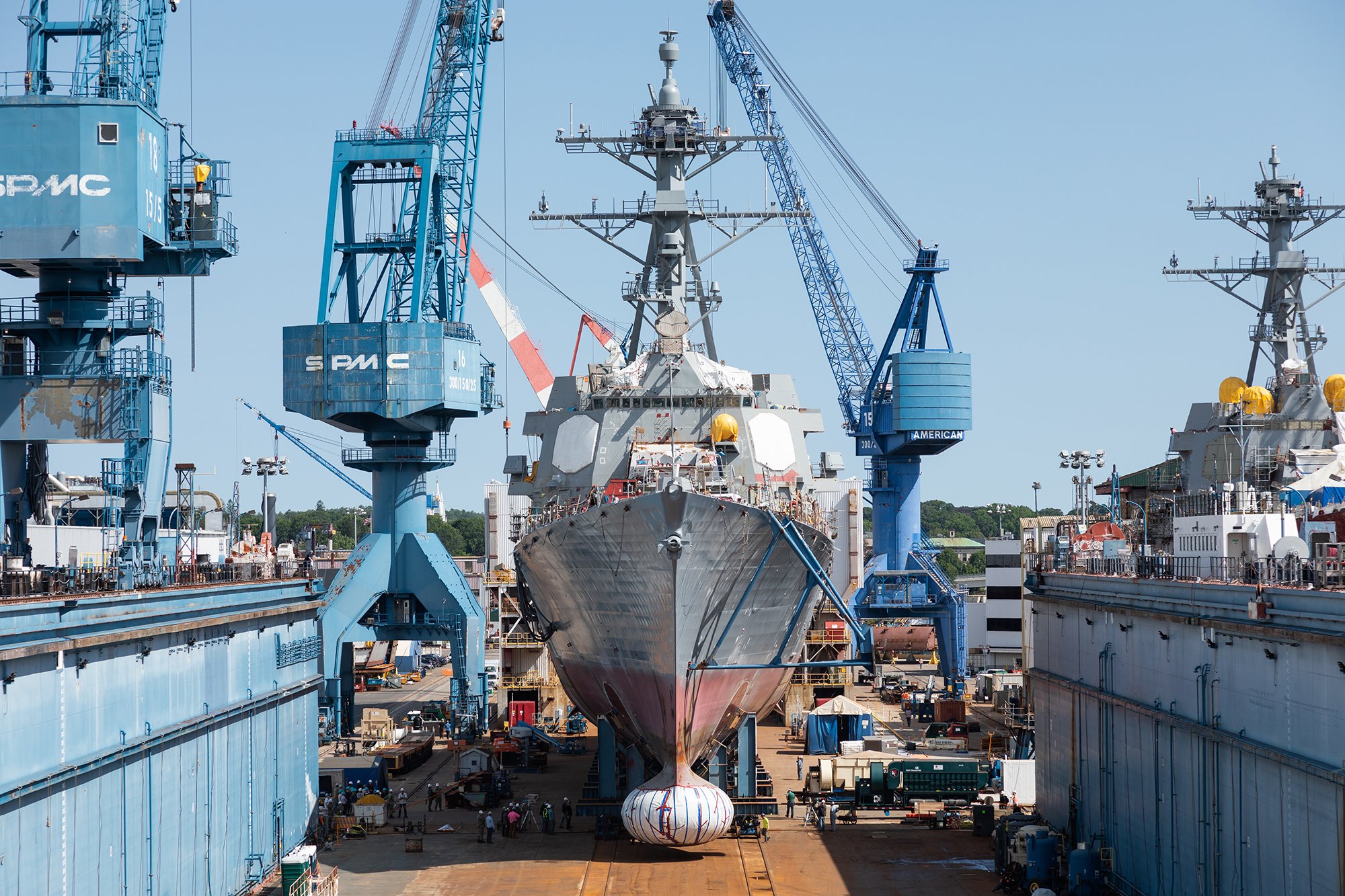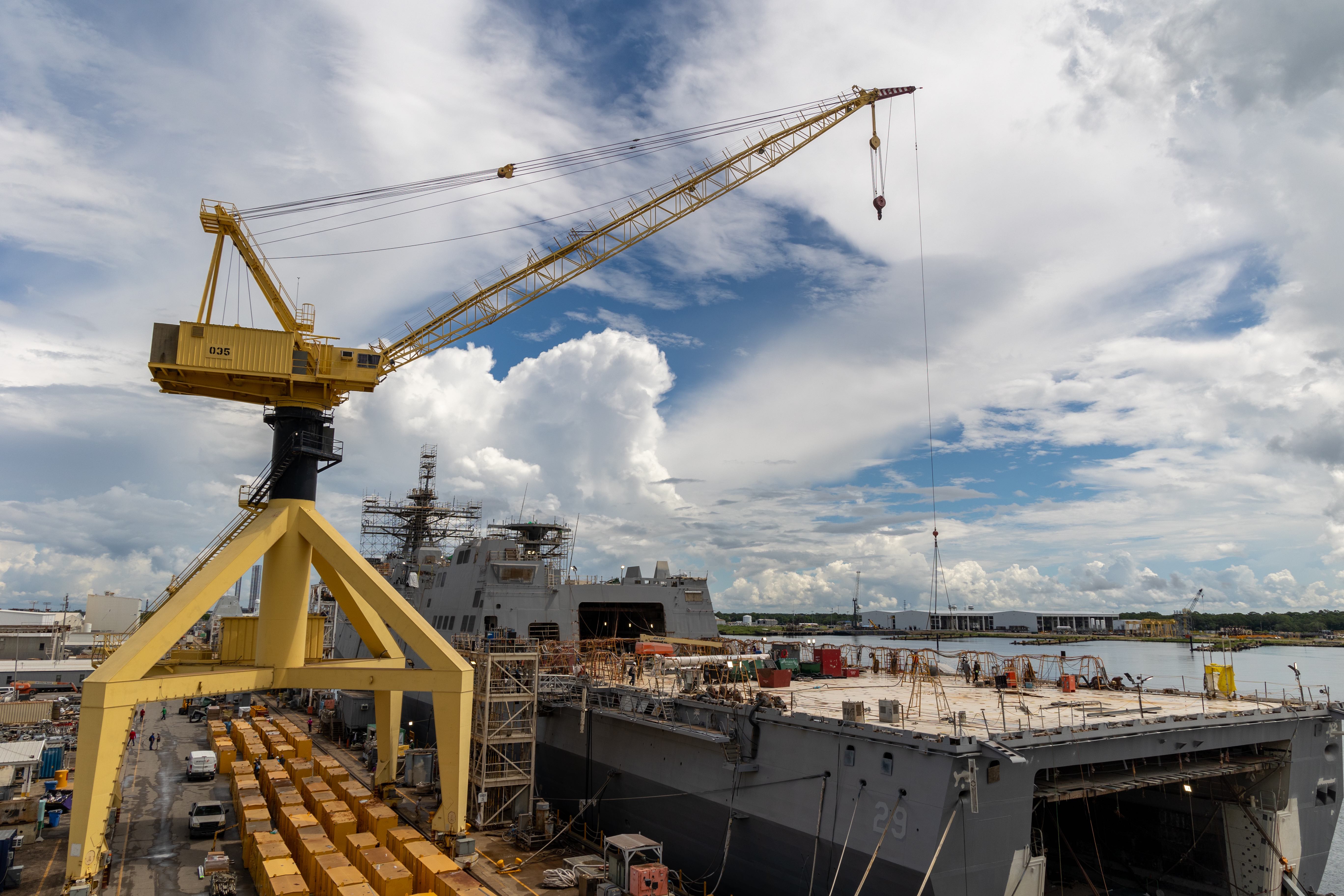
The Navy is now more than 80 ships short of the latest estimate of what the sea service thinks it needs to fulfill the Biden administration’s national security strategy.
The Battle Force Ship Assessment and Requirement, a congressionally-mandated report, requires 381 ships, up from 373 in the 2022 report, the first year it was released. As of Monday, the Navy’s battle force was 299 ships.
“The analytics-based report determined a future battle force objective of 381 ships is required to meet future campaigning and warfighting demands,” the Navy said in a statement given to USNI News.
“This report supports the 2022 National Defense Strategy and will inform future budget submissions and force structure requirements. The 2023 BFSAR reinforces the need for a larger, more capable, more distributed naval force.”
The details of the report are classified with no unclassified report planned to be released, Navy officials told USNI News on Tuesday.
“The Navy will continue to work with Congress and discuss the classified report, which was submitted in accordance with law,” reads the statement.
”A classified report enables the Navy to share greater insights and information about force structure requirements and the composition of our Navy.”
The requirement for the BFSAR was created to get an unvarnished assessment of what the Navy needed directly from the service after complaints from the Hill and after the Office of the Secretary of Defense took control of the service’s force structure assessment process in 2020.
A week after the BFSAR was released last year, Chief of Naval Operations Adm. Mike Gilday outlined its public Force Design 2045 plan with additional details and a breakdown of the 373 total.
“In the 2040s and beyond, we envision this hybrid fleet to require more than 350 manned ships, about 150 large unmanned surface and subsurface platforms, and approximately 3,000 aircraft,” reads last year’s NAVPLAN.
“Strategic competition with China is both a current and long-term challenge. Focusing our force design on 2045 will inform the most consequential decisions and investments the Navy needs to make in the critical decade ahead.”
The report was delivered to Congress on June 20 with no announcement, and several legislative sources contacted by USNI News this week were unaware the report had arrived.
The service did say that the report said the Navy had a “future objective” in the report for 31 amphibious ships and that the analysis affirmed the amphibious ship total.
The future of the amphibious force has been a major point of friction between Congress, the Navy and the Office of the Secretary of Defense. Former commandant of the Marine Corps Gen. David Berger testified multiple times this year that there was no path to the 31 amphib force while construction of new gators were undergoing a “strategic pause.”
“Since 2019, four Department of the Navy studies… have examined amphibious ship force structure requirements. With slight variations, each found that an inventory of between 31 [to] 28 L-class ships and up to 35 LAW are necessary for naval forces to sustain consistent forward-deployed campaigning objectives and reliably react to unforeseen contingencies,” Berger wrote a letter to Congress, USNI News reported in May.
The total does not include unmanned ships the Navy is currently developing, the service told USNI News.

“While unmanned platforms are not counted in the battle force, they are additive to Battle Force ships and will continue to be an important part of the Navy. Modeling incorporated the use of unmanned platforms. Additional analysis is required to determine future unmanned vehicle inventory objectives,” reads the statement.
“The Navy has and continues to focus on unmanned capabilities on, above, and below the sea.”
Other details from the BFSAR were not made available.
The NAVPLAN from 2022 called for a notional unmanned force of 150 ships.
Under the Navy’s long-range shipbuilding plan released in April, the service would reach a battle force of 367 by 2053 in its most optimistic funding scenario.
The BFSAR is one of almost a dozen overlapping reports, studies and analyses that have all called for the Navy to grow significantly since 2016. At the time, then Secretary of the Navy Ray Mabus, in opposition to Pentagon leaders at the time, called for a fleet of 355 ships in the fleet assessment. Congress quickly enshrined the 355-ship total into law as part of the Fiscal Year 2018 budget bill.
More recently, the Navy has been more reluctant to be as bold and public about what it needs, naval analyst Bryan Clark told USNI News
“There’s a big question on why not be public on the number,” he said.
“The Navy has been in the mode to obscure what it needs to do because they are under budgetary constraints and can’t meet those goals.”





